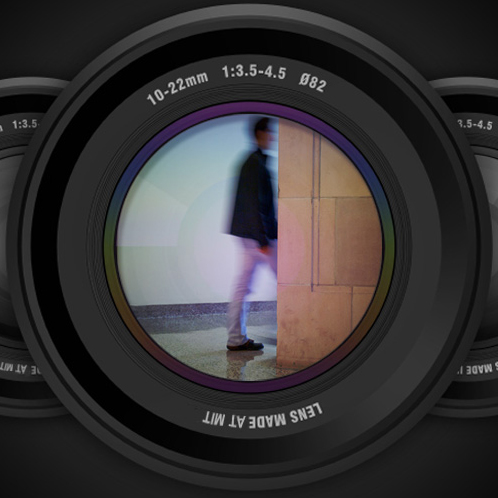A camera that peers around corners
March 22, 2012
MIT Media Lab researchers have developed a camera that can see around corners.
The system can produced recognizable 3-D images of a wooden figurine and of foam cutouts outside their camera’s line of sight.
The research could ultimately lead to imaging systems that allow emergency responders to evaluate dangerous environments or vehicle navigation systems that can negotiate blind turns, among other applications.
The principle behind the system is essentially that of the periscope. But instead of using angled mirrors to redirect light, the system uses ordinary walls, doors or floors — surfaces that aren’t generally thought of as reflective.
The system exploits a device called a femtosecond laser, which emits bursts of light so short that their duration is measured in quadrillionths of a second. To peer into a room that’s outside its line of sight, the system might fire femtosecond bursts of laser light at the wall opposite the doorway.
The light would reflect off the wall and into the room, then bounce around and re-emerge, ultimately striking a detector that can take measurements every few picoseconds, or trillionths of a second. Because the light bursts are so short, the system can gauge how far they’ve traveled by measuring the time it takes them to reach the detector.
The system performs this procedure several times, bouncing light off several different spots on the wall, so that it enters the room at several different angles. The detector, too, measures the returning light at different angles. By comparing the times at which returning light strikes different parts of the detector, the system can piece together a picture of the room’s geometry.
Ramesh Raskar, an associate professor at the MIT Media Lab, who led the new research, envisions that a future version of the system could be used by emergency responders — firefighters looking for people in burning buildings or police determining whether rooms are safe to enter — or by vehicle navigation systems, which could bounce light off the ground to look around blind corners. It could also be used with endoscopic medical devices, to produce images of previously obscure regions of the human body.
Raskar adds that his team’s image-reconstruction algorithm uses a technique called filtered backprojection, which is the basis of CAT scans.
Raskar says his group has discovered that the problem of peering around a corner has a great deal in common with that of using multiple antennas to determine the direction of incoming radio signals. Going forward, Raskar hopes to use that insight to improve the quality of the images the system produces and to enable it to handle visual scenes with a lot more clutter.
Ref.: Andreas Velten et al., Recovering three-dimensional shape around a corner using ultrafast time-of-flight imaging, Nature Communications, 2012 [DOI: 10.1038/ncomms1747]
